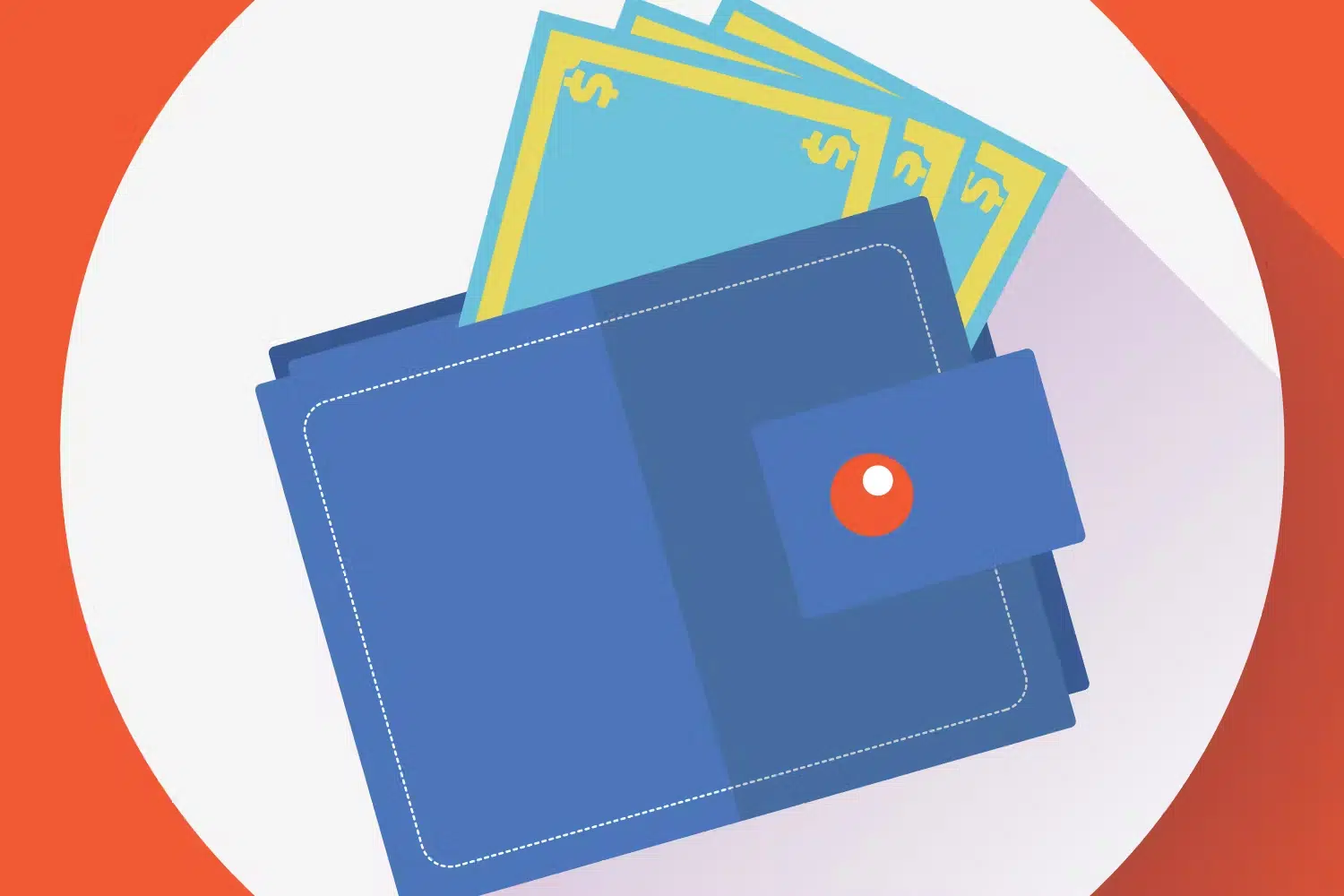
How to Save Money: Simple Concepts to Improve Your Bottom Line

Along with income and housing, saving money is a cornerstone of financial security. Americans had a record-breaking personal savings rate of 33.8% (on average) during the COVID-19 pandemic—but with inflation concerns and the economy of the last year, that rate has plummeted to 3.1%.
Beyond numbers and dates, some people are extreme savers and others aren’t saving at all. What if you’re somewhere in the middle, and you just don’t know where to start?
Saving money doesn’t have to be complicated. If you have the means, there are a few simple methods you can use to cut costs and make your money go further, allowing you to save more.
This article is meant to provide a basic understanding of how to save money, but we recognize that saving isn’t possible for every financial situation. Some folks are working on building their careers so they can save more, and others are working on paying down debt. It can be frustrating to hear that you should save, but your expenses and income just won’t allow it—and we hear you.
We want to give you useful advice now so when you can save, you’re ready to put a plan in place.
It All Starts Here
Launch your journey today with a fee-free savings–no minimum balance fee, no overdraft fees!
How to Save Money
Everyone has a different reason to save, whether it’s for emergency savings or for a down payment. Having a savings goal (or several!) can be really helpful as you begin to save, because it focuses your efforts toward a single, achievable goal.
If you haven’t already made a financial goal, it’s time to make one! Think about a small, achievable savings goal you can complete in a relatively short period of time and how much you want to save for it. Keep this goal in mind as you read through the article.
Ready to save? Here are nine ways to make it happen!
1. Save consistently by paying yourself first.
When it comes to making a savings plan, many of us think that we’ll just save whatever is left over at the end of a pay cycle. But how many times does that actually happen? It might feel like that leftover money always gets used somehow, whether it’s for a spontaneous night out or an emergency of some kind.
If you’re serious about putting money aside in savings, paying yourself first is one of the best ways to save money. You might have heard this term before, and the meaning is simple: put money into your savings every time you get a paycheck, right away.
If you already have a budget made, this is as simple as estimating how much you can save, adding it into your budget, and set up a system for saving. (If you don’t have a budget yet, read this article!) There are a few ways to automate this, too: through your payroll if you get direct deposit, through your bank, or manually each time you get paid.
If your finances allow for it, consider automatic transfers. By setting it and forgetting it, you might be surprised by how quickly it will add up over time!
If automatic transfers make you nervous, try a small amount, like $25 a month. If your income goes up, adjust the amount.
2. Use multiple accounts to divide your money.
Keeping your savings separate from your everyday spending money is a great way to ensure you don’t accidentally use funds you earmarked for a long-term goal. This is exactly why savings accounts exist!
Additionally, you can use multiple savings accounts to save for different goals. Be sure to find a financial institution that 1) is insured 2) won’t charge you fees for your accounts.
3. Take the thought out of it by making it automatic.
If you want to take paying yourself a step further, automate your savings transfers.
Most financial institutions allow you to set up automatic money transfers between accounts in their app or online banking platform. Automated savings is one of the best ways to save, because you’re saving money every month (or whatever interval you choose) without even thinking about it.
Note: Set up automatic transfers only if you know that you’ll have money in your checking account to cover any bills or automatic withdrawals you have each month. If your balance is low and you transfer a chunk of cash out, you may be hit with overdraft fees when bills hit… unless, of course, you’re banking with a fee-free account from Amplify.
4. Free up cash flow by paying off debt.
Debt can be a major barrier to saving.
Interest causes your balances to grow at a fast pace, making it difficult to keep up with even the minimum payments. As a result, it’s not uncommon for people to feel like they’re stuck in a never-ending cycle of debt— leaving little room for saving each month.
If you have debt and you want to pay the least amount of money in interest, pay off the highest interest debt first. And after your debt is wiped, you’ll be free to save!
5. Curb spending by creating a budget.
One of the best ways to save money is to create a budget and stick to it.
When you know exactly how much money you have coming in and going out, it’s easier to make financial decisions that are in your best interest.
Start by tracking your spending for a month to get an idea of where your money goes. Then, set limits for yourself in each spending category. For example, you may want to limit yourself to $50 per week on entertainment.
Once you have your budget in place, make sure to review it regularly and make adjustments as needed. By taking control of your finances, you can learn how and when to pull back your spending, save more money, and free up money for a big goal.
6. Take advantage of windfalls and unexpected income.
One simple method for saving money is to make sure you put any windfalls or unexpected income into savings. This could be a bonus from work, a tax refund, or even just a little bit of extra cash that you weren’t expecting.
For example, if you’re paid on a biweekly basis—every two weeks—you will have some months when you get three paychecks instead of two. If you calculate your budget based on the income for two checks a month, you now have an “extra” paycheck. Instead of folding it into your normal monthly spending, put that “extra” into savings instead! This money can give your account an extra boost, motivating you to keep up your normal saving schedule.
7. Set both short and long term goals.
When it comes to saving money, one of the most important things you can do is set goals.
Without a goal in mind, it can be all too easy to spend your money on unnecessary things. But if you have a specific goal in mind—whether it’s saving up for a down payment on a house or simply having enough cash to cover an unexpected expense— you’re much more likely to be mindful of your spending.
Long-term goals, in particular, can be extremely motivating; after all, if you’re aiming to save up for retirement, that’s a goal that will take years (if not decades) to achieve. But even smaller, short-term goals can make a big difference in your financial wellbeing.
So if you’re looking to get your saving efforts on track, make sure to set some goals— and don’t be afraid to dream big.
8. Analyze your monthly bills.
It’s important to understand exactly what you’re paying for when it comes to your monthly bills.
Take a close look at your utility bills, for example. Are you being charged for services you don’t use? Are there any discounts or cheaper monthly plans you could be eligible for? Calling the company and asking questions can save you a lot of money in the long run.
The same goes for your other monthly bills, such as your cell phone bill, your cable bill, and your internet bill. Don’t be afraid to pick up the phone and ask for a better deal. You may be surprised at how much you can save!
9. Look at your everyday habits to see where you can save.
Everyday expenses add up, and it can be difficult to keep track of where your money is going. However, by taking a close look at your spending habits, you can identify areas where you can cut back and save.
For example, do you have a streaming service that you never use? Or do you buy lunch out every day when you could pack a meal from home? By identifying these small expenses, you can make a big impact on your bottom line.
The Bottom Line
In short, there are many simple ways to save money. By being mindful of your spending, setting a budget, and automating your savings, you can form smart money habits.
Not everyone is ready to save money, and we get that. When you’re ready, this article—and many others!—will be here for you.
Fee-Free Banking is Here
Looking for a financial institution that doesn’t nickel and dime you? If you live or work in Texas, join Amplify!




